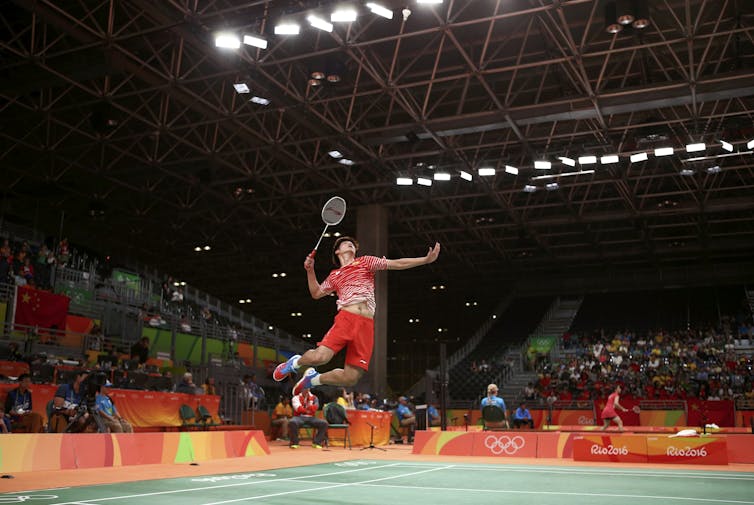The shuttle – aka shuttlecock or badminton birdie – has been recorded moving at 408km per hour (at the 2015 Hong Kong Open) from a badminton stroke known as the jump smash.
This easily beats the fastest recorded tennis serve – by Australia’s Samuel Groth (263.4km/h) – and the records in other sports, such as golf (339.6km/h), squash (281.6km/h), soccer (210.8km/h), ice hockey (183.7km/h), baseball (174km/h), cricket (161.3km/h) and table tennis (112.5km/h).
To be able to hit shuttles at such high speeds or return them, badminton players need to excel in multiple areas.
Given badminton is one of the most popular sports in the world (especially across Asia, Denmark and the United Kingdom), with over 200 million people playing worldwide, what does it take to compete at the highest level? What, in other words, makes an elite badminton player?
Physical and mental demands
Badminton players need to excel in physical, tactical, psychological and technical traits. A badminton match involves the best of three games. To win a game, a player or pair needs to score 21 points. Points are scored by one player or pair after every rally.
Competitive matches last between 40 minutes and an hour, and are played at a high intensity; intense rallies usually go for six to eight seconds.
Although a badminton match goes for less than half the time of a typical tennis match (between two hours and 45 minutes and three hours for tennis), badminton players tend to run twice as far and hit nearly twice as many shots (badminton players run around 6.4km and tennis players around 3.2km).
Badminton is usually thought of as an aerobic or endurance type of sport since players must be able to play for around an hour. But it’s made of short, high-intensity rallies that work the anaerobic system; energy is provided by both the aerobic (60% to 70%) and anaerobic (30%) systems.

Being tall and lean may seem advantageous, but they’re not essential for success. Elite badminton players have incredible athletic ability and must possess high levels of speed, agility, strength, flexibility and muscular endurance.
Exceptional skills
The speed of the game requires elite badminton players to be tactically very good. This includes a high level of visual fitness – for reading the play, anticipating actions and making good strategic decisions. Indeed, research shows elite players have a shorter reaction time to visual stimulus.
They also have more precise reactions and refined eye-hand coordination. This, along with experience, provides them with a greater ability to anticipate stroke outcome and increase their opportunity to win the next shot.
They must be able to perform movements such as lunging, jumping and changing direction with good technique to move effectively across the court.
Then, there’s the range of strokes. Some may require generating a lot of power in the body and velocity of the shuttle, such as the jump smash. Other strokes, such as the short serve, require precision movement involving skilful coordination of the shoulder, elbow and wrist joints to hit the shuttle with the required trajectory (path of the shuttle) and speed to ensure accuracy.
In what is one of the fastest sports in the world, it takes an exceptional player to be at the elite level as they must excel in many areas. It takes someone extraordinary to win in badminton at the Olympic Games.

